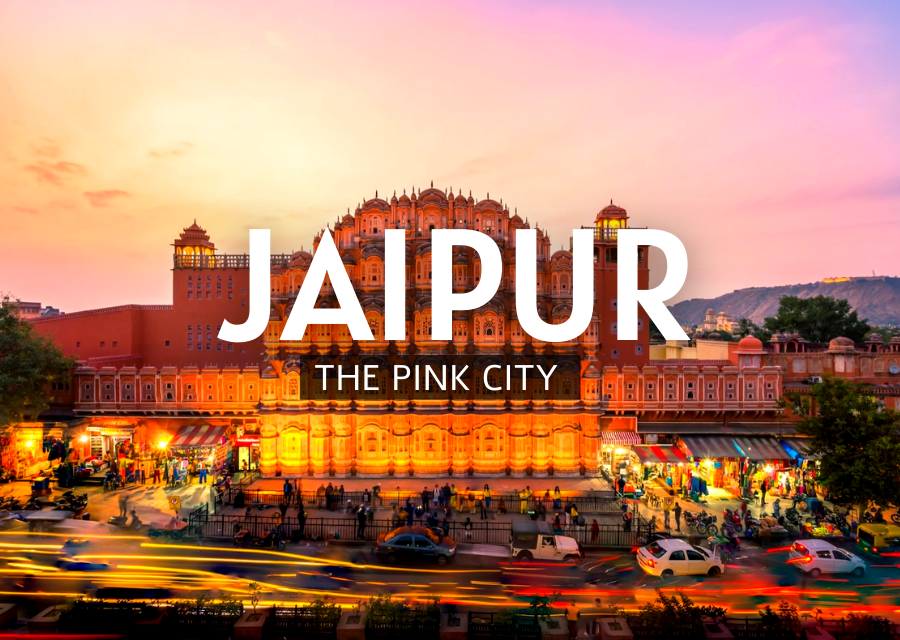JAIPUR CITY A TAGS HOLDS PINK MORNING AND EVENINGS: Jaipur was founded by and named after Maharaja Sawai Jai Singh, the ruler of Amber, in 1727. It was as a welcome gesture to Queen Victoria and Prince Albert that the city was painted pink in 1876 and gained itself the nomenclature of the Rose Pink City. Many of the big hotels choose to blend in, so during my stay, I notice that several of the major hotels bear the color scheme of the palaces.
A summary of Jaipur traveling Places:
Speaking of palaces, there is no dearth of them. is the Amber Palace and Fort, up towards this sandstone and marble structure. Whilst the intricate wall paintings, studded with precious stones, and the frescoes are eye-catching, the most.
The fascinating part is the Sheesh Mahal. This is where the famous scene from MUGHAL-E-AZAM, of Madhubala dancing defiantly to the tune of “PYAR KIYA TOH DARNA KYA”, has been shot and From wall to ceiling, the hall and verandah are studded with mirror tiles and one understands that the idea of the design is for the whole hall to light up, with the light of a single ray reflecting in all the mirrors. On the other side of the hill is the Jaigarh Fort, constructed by Jai Singh II as a Fort of Victory. Built of red sandstone, the walls of this fort are dominated by watchtowers, from where it is possible to take a peek and get an idea of the security that was in place. At one time, the place served as a cannon foundry and I got a glimpse of the Jaivana, the world’s largest cannon on wheels. Interestingly, this cannon has never been fired, as unsurprisingly, the fort was never captured
How to reach Jaipur:
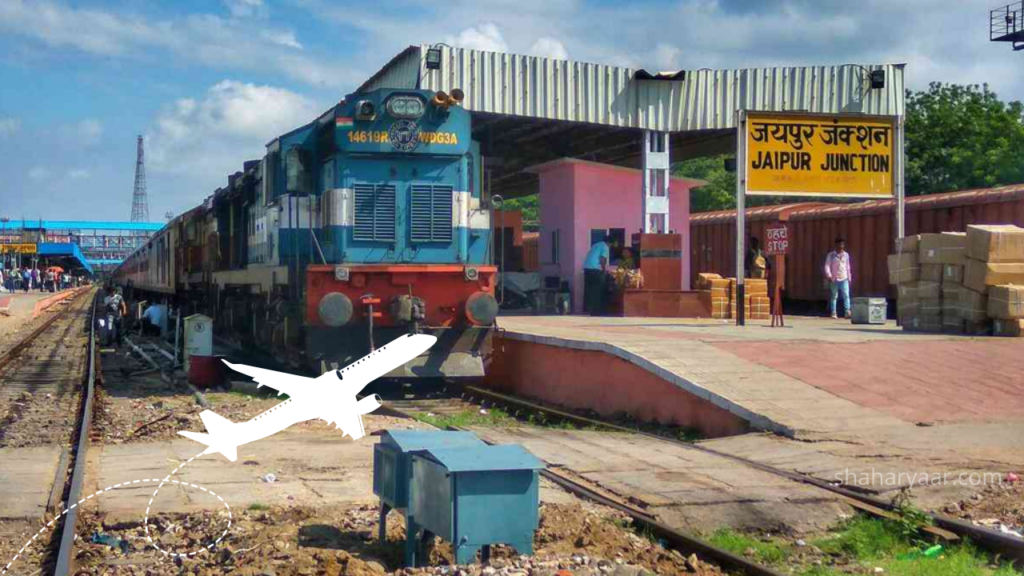
A Jaipur trip from Delhi by car will allow one to cover beautiful places along the route. When you opt for our Delhi to Jaipur trip packages, you can enjoy driving through rustic towns and villages, while making stopovers at any place you find interesting.
Jaipur by Flights:
Delhi to Jaipur flights is operated by various domestic operators including Air India, Spice Jet, Indigo. There are in total 16 flights from Delhi to Jaipur Airport every day.
Did you know: Jaipur International Airport (JAI) has been recognized as the world’s best airport in the category of 20,00,000 to 50,00,000 passengers per year for 2015 & 16.
Who should choose this mode: From the budget point of view single or couples can go for it as it will prove to be value for money.
This mode will come at a comparative price to trains or cars if you get the tickets at cheaper rates.
Fare: INR 1,499 onwards
Time to reach: 55 minutes
- HOW TO REACH JAIPUR
- FROM DELHI TO JAIPUR
There are two highways to reach Jaipur from Delhi, NH48 & NH248A. The most preferred one by the general public is the NH48. It is a 4 lane highway that starts from Delhi and ends at Chennai. It passes through Jaipur, Udaipur, Ahmedabad, Surat, Mumbai, Pune, Tumakuru, Bangalore, and Vellore. The distance from Delhi to Jaipur via NH48 is 280kms
Who should choose this mode: You can choose to go via car as well as bus depending on your preference.
A car is a good option, if you are looking for – Time flexibility, freedom, and customization.
This mode is suitable if you are traveling in a group, this way the price is divided among all.
Fare by Car: INR 6,500 two way
BY BUS:
The roads are good, so anyone or whoever wants the road experience should go for it. If you opt by bus this mode proves to be budget-friendly as well.
However, if you don’t have a budget constraint and would like more flexibility, a car is a better mode than a bus.
Travel time would be marginally higher than train You will find enough bus service from Delhi to Jaipur.
Buses are available ranging from Rs 300 to Rs 2000. Like Volvo, AC buses to Non-AC State transport buses.
Many private operators run these buses as well.
Fare: Rs 250 to Rs 2000 depending on Bus Type For an easy and comfortable journey, here’s a comprehensive route plan:
Delhi to Jaipur: 277 km via NH 48
Time 4 hours, 51 minutes (with traffic, add an hour more)
Delhi → Gurgaon → Bhiwadi → Neemrana → Shahpura → Jaipur
Time from Delhi to Neemrana: 2 hr 28 min (128.7 km) via NH 48
Neemrana to Kesroli (optional): 1 hr 49 min (83.5 km) via Narnaul – Behror – Alwar Rd
Neemrana to Jaipur: 2 hr 31 min (156.5 km) via NH 48
Nothing comes close to representing a culture than its cuisine. And Rajasthani cuisine is a classic example of this.
THE JAIPUR CUISINE (TASTE AND FOOD OF JAIPUR):
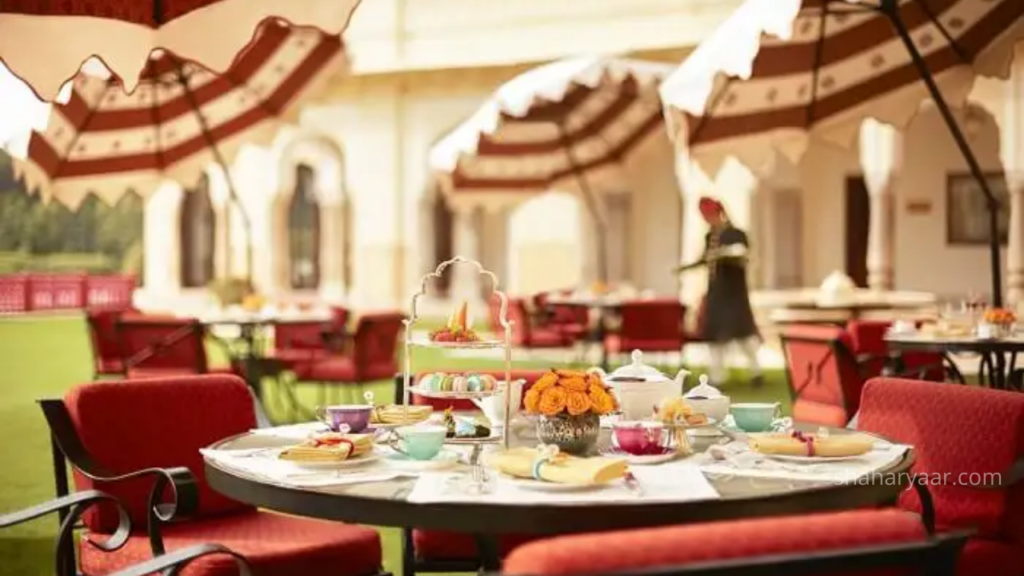
Dishes cover the entire spectrum — from the very sweet to the very spicy — and everything in between. Jaipur has several restaurants that serve authentic Rajasthani cuisine. But being the capital, you will also have a choice of restaurants where the dishes are tweaked to suit the international palette. But if you are in Jaipur, there are some places you absolutely cannot miss visiting:
Laxmi Misthan Bhandar is a pure vegetarian restaurant that has been in business since 1954. LMB serves a wide range of Rajasthani and Bengali sweets and even has a large restaurant serving vegetarian Rajasthani delicacies. The Rajasthani thali, though a tad overpriced, has a great spread that gives you a taste of almost every major vegetarian Rajasthani dish. Alternatively, try out the Pyaaz Kachori, and certainly don’t miss the kulfi and falooda.
Khandelwal Dhaba Purana Wala located along Sikar Road is as good an option for vegetarian Rajasthani cuisine as LMB. Since it is on the outskirts of the city, Khandelwal Dhaba also offers al fresco seating and a wide range of veg fare. Khandelwal Special Thali is a good choice here.
Spice Court in Civil Lines is an upscale restaurant that specializes in Laal Maas. While The Laal Maas here is indeed good, the unsung star of Spice Court is Junglee Maas, which beats the former hands down.
Douse the fire in your mouth with some kulfi or drop by at the neighboring Dzurt patisserie, which is very much part of
Spice Court but run by a Le Cordon Bleu chef.
Chokhi Dhani can be translated as ‘special village’. Located some 20 km from Jaipur
Along Tonk Road, Chokhi Dhani recreates the ambiance of a Rajasthani village. The large open-air ‘restaurant’ offers a typical ‘rural Rajasthani experience’ complete with traditional entertainment, snack stalls, merry-go-rounds for kids, camel rides, and of course a proper sit-down Rajasthani meal which is served by enthusiastic servers. Chokhi Dhani was the first restaurant of its kind, offering rural experiences. Since then it has opened several branches around the country and set off a similar trend of places attempting to recreate an authentic rural Indian experience.
Lassiwala on MI Road opens its doors as early as 7.30 am and serves absolutely nothing but thick delicious lassis in earthen glasses of different sizes.
SHOPPING IN JAIPUR:
stores will even arrange to deliver your shopping home for you! The old market is spread out around Hawa Mahal and is divided into specific quarters that sell specific goods.
For instance, Bapu Bazaar is a great place to shop for sarees and fabrics. It is also the perfect place to go shopping for trinkets and other small return gifts. Sireh Deori Bazaar and Johari Bazaar house jewelry stores and are especially known for meenakari jewelry, a specialty of Jaipur. You can also find some sweet deals for fabrics in Johari Bazaar.
Kishanpole Bazaar is known for the bandhani work, Nehru Bazaar for its fabric, jootis, and perfumes and Maniharon Ka Rasta is a great place to go shopping for bangles.
Rajasthali Emporium opposite Ajmer Gate is a state emporium that sells all things Rajasthan — from artifacts to embroidery, pottery to woodwork, puppets to miniatures, and brassware to bandhani fabrics. While the store
is a great place to shop if you’re in a hurry, use the trip to gauge the prices of items before setting out into the bazaars of Jaipur.
WILDLIFE IN JAIPUR:
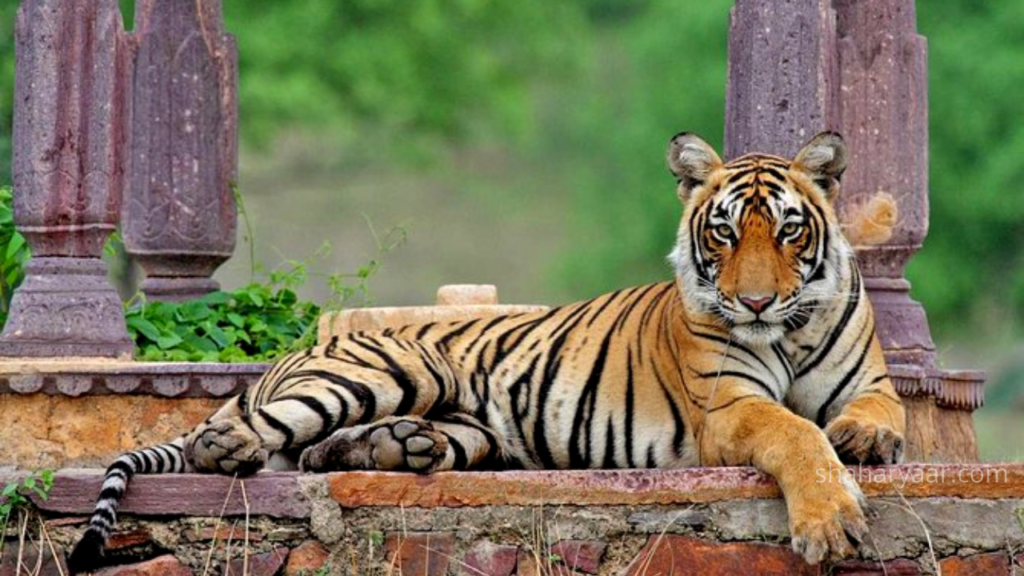
KEOLADEO NATIONAL PARK
including wild boar, mongoose, antelope, jackal, jungle cat, chital, nilgai, and sambar. Keoladeo National Park is the proud owner of a UNESCO World Heritage Site title.
VISITING KEOLADEO NATIONAL PARK
Keoladeo National Park is India’s premier birdwatching sanctuary – an avian wonderland that attracts vast numbers of feathered creatures thanks to its strategic location, protected status, and extensive wetlands. Some 385 species have been recorded here, including around two hundred year-round residents along with 190-odd migratory species from as far afield as Tibet, China, Siberia, and even Europe, who fly south to escape the northern winter. Keoladeo is probably best known for its stupendous array of aquatic birds, which descend en masse on the park’s wetlands following the dramatic arrival of the monsoon in July. These include the majestic Saras crane and a staggering two thousand painted storks, as well as snake-necked darters, spoonbills, white ibis, and grey pelicans. There are also various mammals in the park,
The best time to visit the Keoladeo National Park is following the monsoon (roughly Oct-March) when the weather is dry but the lakes are still full and the migratory birds in residence (although mists in December and January can hinder serious birdwatching). Rajasthan’s decade of drought finally came to an end in 2012 with an unusually long monsoon.
Consistent rainfall combined with a series of three new permanent irrigation channels – designed to keep the water level in the lakes consistent – replenished Keoladeo’s waterways which had all but dried up during the drought. During the
In the winter months, the park can be quite cold, with temperatures below 10 degrees Celsius. The desert climate means that temperatures reach highs and lows depending on the months. If you visit in winter, be sure to look out for the Indian
Pythons bathing out in the sun.
Getting around the park is fairly easy, although vehicles are prohibited 2km into the park. Well-defined footpaths make walking easy, and bicycles can be hired to cycle around quite pleasantly. The most advised form of seeing the
the park is to hire a rickshaw, the drivers are trained by the park and are very knowledgeable
FAMOUS TOURIST PLACES IN JAIPUR
Hawa Mahal
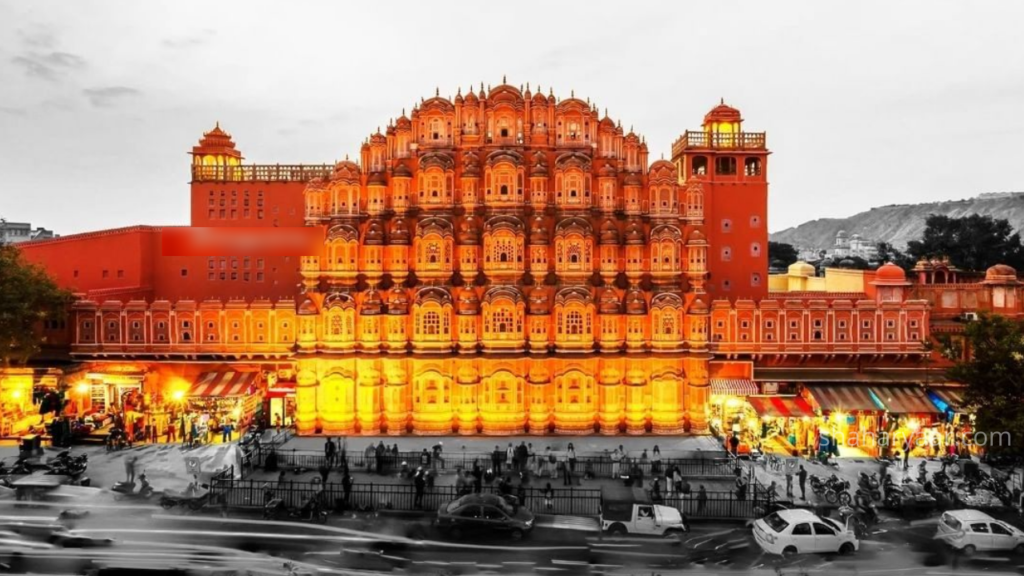
Watch the world go by through the hundreds of tiny windows at Jaipur’s famous Palace of the Winds aka Hawa Mahal. An important landmark in the city, the pink stone Hawa Mahal is considered the epitome of Rajput architecture. Maharaja Sawai Pratap Singh built Hawa Mahal in 1779. It is known as the Palace of the Winds since it has 953 tiny stained glass windows. The windows are locally called “jharokhas”. Tourists love peeping out of them to see the beautiful city of Jaipur. Hawa Mahal somewhat resembles a honeycomb thanks to all its symmetrical windows.
Amber Fort

Take an elephant ride up the hill to the spectacular Amber Fort (pronounced Aah-mare fort) that was built by Raja Man Singh, way back in the 16th century. Amber is a mesmerizing blend of Hindu and Mughal architecture. Amber Fort was used by the Rajputs both for defense purposes as well as residential purposes. Therefore, within its mighty walls, one finds charming gardens and magnificent palaces made from marble and precious stones, richly decorated with intricate stonework and beautiful paintings. Amber Fort houses Jai Mandir, a famous temple, which in turn houses the sublime Sheesh Mahal, a beautiful hall filled with mirrors that are so artistically set that even a tiny ray of light gets reflected in the mirrors and sets the hall ablaze with fiery radiance.
Chokhi Dhani
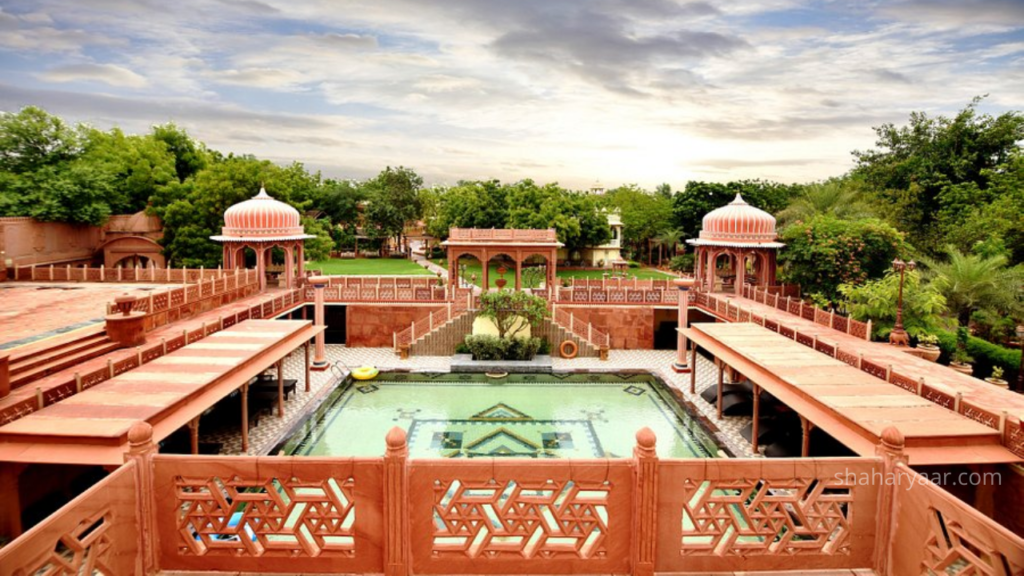
Immerse yourself in a recreated ethnic village at the hugely enjoyable Chokhi Dhani. Located on the outskirts of Jaipur in Rajasthan, Chokhi Dhani features 5-star ethnic village-themed cottages and haveli suites. Chokhi Dhani is a popular attraction for tourists who wish to have a taste of village life in Rajasthan. You will be able to watch some lovely folk music and dance performances every evening. Other attractions include the puppet show, the magic show, and Bamboo calisthenics. In the evenings, the entire resort is lit up with twinkling lights that take you back in time to another, more royal era.
Albert Hall Museum

This museum is supposed to be the oldest one in Rajasthan. It has an assortment of rare and beautiful artifacts on display including textiles, carpets, paintings, metal and wood crafts, pottery, arms and weapons, flora and fauna of the state, toys, dolls, etc. It also puts on display the miniature paintings of several sub-schools of Rajasthani art. The galleries on the ground floor showcase the dresses, jewelry, and artifacts of the various tribes and classes of Rajasthan. One gallery has a showcase of henna art; an exhibition of the typical ethnic Rajasthani motifs and designs. Puppets and Phad paintings constitute yet another gallery. The highlights of the museum, however, are displayed in its central gallery, which is completely devoted to the physical expression of music and dance art forms.
City Palace

Jaipur’s City Palace is another coveted place in the heart of the city. This has been the court of the royal family for almost three centuries and hence retains the last charm of the Rajputs of Jaipur. It is their home even today and also open to public viewing. Some of the most beautiful parts of the palace you can see are the landscaped garden courtyards, Chandra Mahal, Mubarak Mahal, Pritam Niwas Chowk, Armoury, etc. Parts of the palace are also open as a museum and worth touring.
Birla Mandir
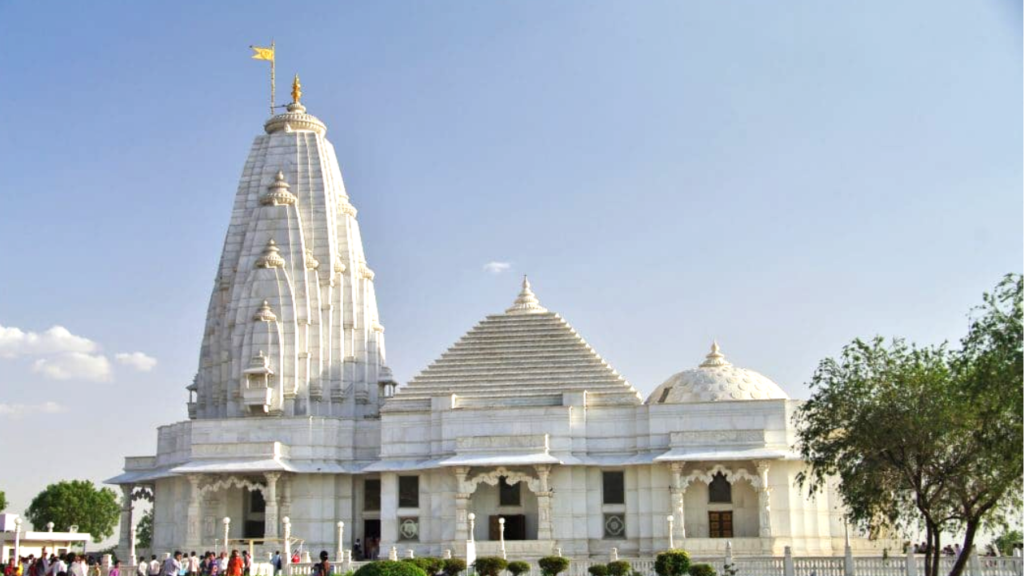
A pristine white marble temple standing in the middle of a pink city, Birla Mandir is a temple dedicated to Laxmi and Vishnu. There are numerous other shrines for many other deities, marble carvings, and doors opening to amazing sunsets. Do visit here for peace of mind.
Amrapali Museum

Home to Indian antique jewelry, the Amrapali Museum of Jaipur features gemstones, jewels, and designs in a collection of 4000+ pieces spanning two whole floors. From gold to silver to alloys, from embellished studded shoes to crowns of kings from Himachal Pradesh, from bracelets and necklaces to rings of Rajasthani craftsmanship, you will find it all here. And some of it is even up for sale in the Museum shop.
Nahargarh Fort

Also called Tiger Fort, the Nahargarh Fort dates back to the 18th Century and is located on the Aravalli Hills. It overlooks the whole city of Jaipur, giving you a majestic bird’s eye view. Due to its perfect defensive structure, this fort was widely used during wars. There is also Madhavendra Bhawan, which doubled up as a summer home of the royals. The murals on walls, parks, wax museums, and restaurants make this a perfect picnic spot.
Galta Ji
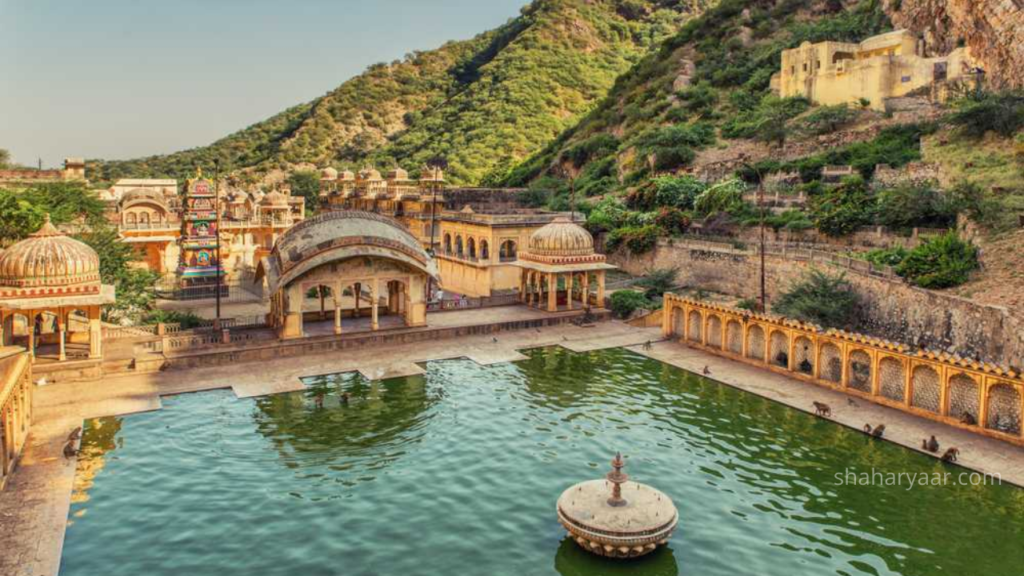
Finding a water source in the desert is akin to finding god. So when the people of Jaipur found a natural spring in the lap of Aravalli’s mountain pass, they called it a gift from the god and dedicated a temple there to Galtaji. A visit to this temple is peaceful and full of discoveries, like that of the sacred water tanks, fountains, and man-made frescoes that tell stories of Lord Krishna. Monkeys throng this space like a second home, hence it is also called the monkey temple. Feeding monkeys is a coveted attraction here, but be aware they don’t snatch your belongings!
Jal Mahal

If Jai Mahal had another name, it would be called a mirage. Looking like an oasis in the desert, this palace floats on the Maan Sagar lake. For now, the tourism to Jal Mahal is restricted, so you only get to view it from the shore, but some plans indicate that that might change in the future. Until then, chase a sunset here, or come early to see the sunrise over this palace of water.
Panna Meena Ka Kund
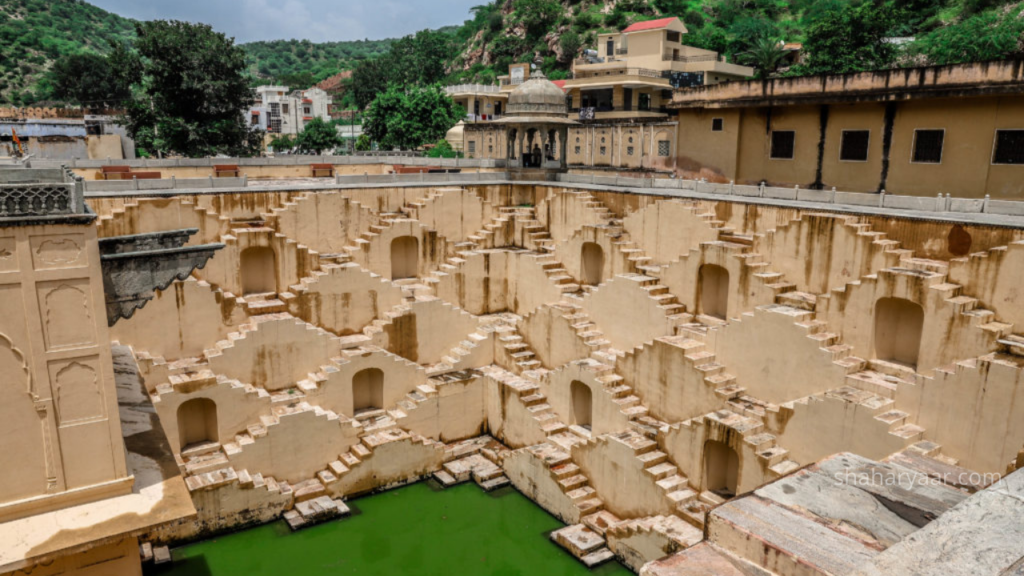
Panna Meena Ka Kund is a stepwell. Locally called a baron, this place was once used and revered as a rare manmade source of water. Meticulously carved steps lead down to the well, from where people filled their pots and drank water in the days of the yore. Panna Meena Ka Kund also doubled up as a hub for the community to meet, especially the womenfolk who came to fill water every day. Today you can visit this place for its awesome architecture and the hub that it still is for the local communities. Because older people still come to sit around and chat their evenings away here.
Jaigarh Fort

There is a set of hills in Jaipur called Cheel ka Teela. Perched atop this set of hills is the Jaigarh Fort. The grandness of its build and its historic significance makes it a must-visit when in the pink city. It was constructed back in 1726 by Sawai Jai Singh II to defend Amer Fort. But that doesn’t compromise its palatial quality in the slightest. Where there are battlements, there is beautiful greenery too. Today the fort is home to the largest cannon wheels of the world, a marvel you can see for yourself.
Abhaneri Stepwell
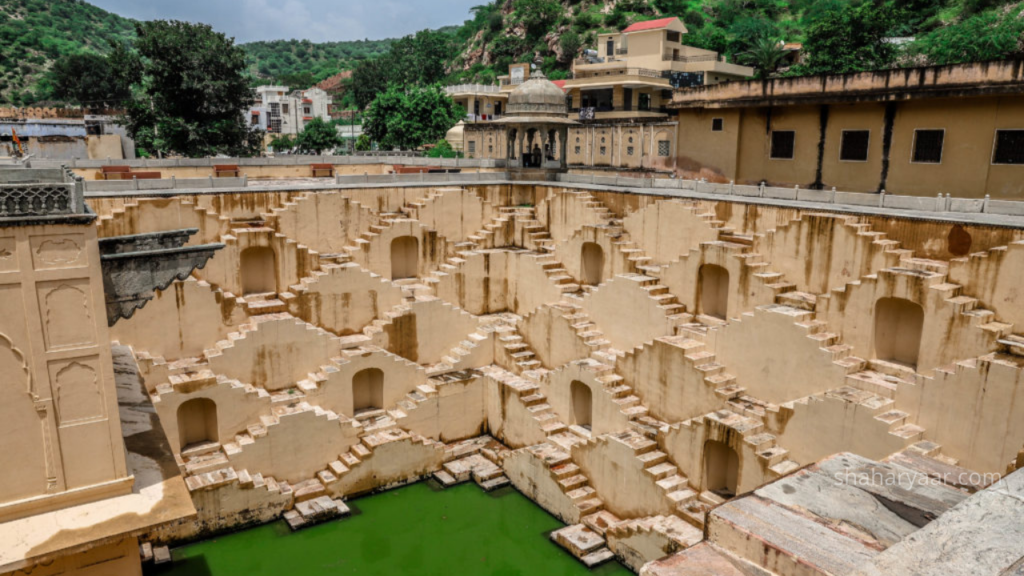
A very intricately made stepwell, the Abhaneri Stepwell is about 20 km from the Jaipur city center. Locally also referred to as Chand baori, this stepwell is one of the largest around. The intent behind building this well back in the day was not just to draw water in summers but also to conserve the underground source, hence making it a sustainable source of water. Having been strong and standing for 10 centuries, the Chand Baori is dedicated to Harshat Mata, the goddess of Joy; and is a must-visit for its architecture and history.
World Trade Park
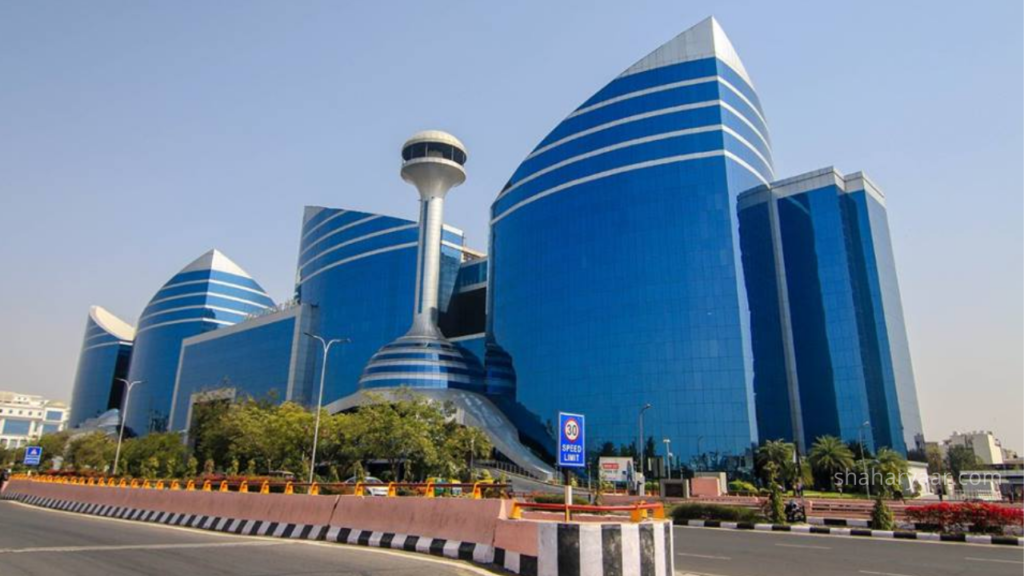
India’s second-largest mall, the World Trade Park in Jaipur is a shopping extravaganza. With its 52 acres of entertainment and recreational fun, this is THE place for you and your family to chill and enjoy the city vibe on a hot summer afternoon. There are more than 500 stores, movie theatres, food courts, and gaming zones in the two tall complexes that are connected by a bridge. It’s a no-brainer then that you can shop your heart out here, from clothes and handicrafts to jewelry and cosmetics to toys — brands as well as boutiques.
Raj Mandir Cinema
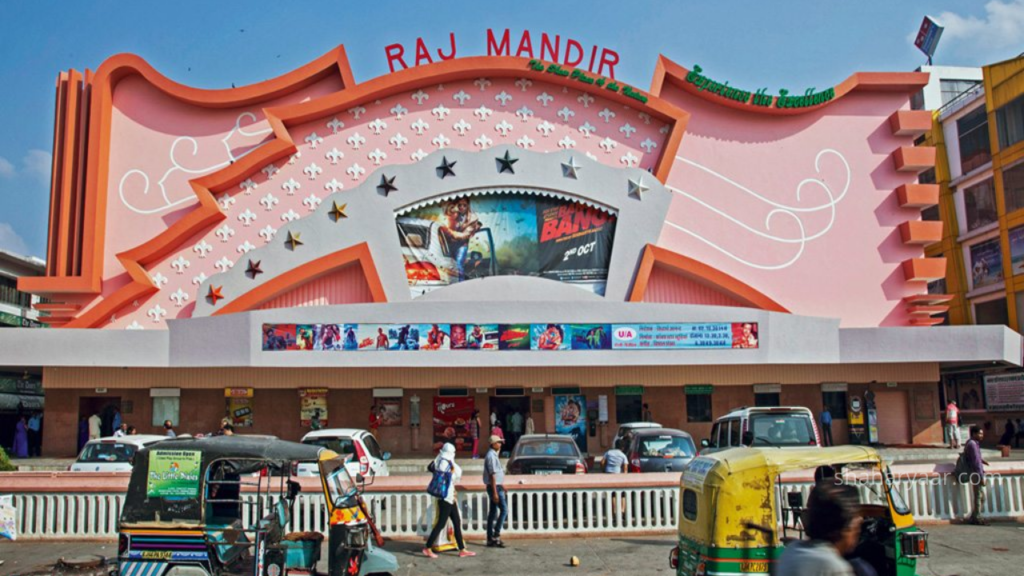
Photograph by https://en.wikipedia.orgRaj Mandir Cinema, one of the oldest theatres around, was created in the 60s by Mehtab Chandra Golcha to give the common people a royal cinema experience. This paved the way for a new era in Jaipur, one where the commoners got attention and were pandered to. The cinema house is designed just so that every person watching the movie feels like it’s been only shown for them, with a mystic surreal aura around the architecture. Only 300 people can watch at a time and the seating chart shows the following tiers — Pearl, Rube, Emerald, and Diamond seating. Do visit to experience a unique type of cinema.
Narain Niwas Palace
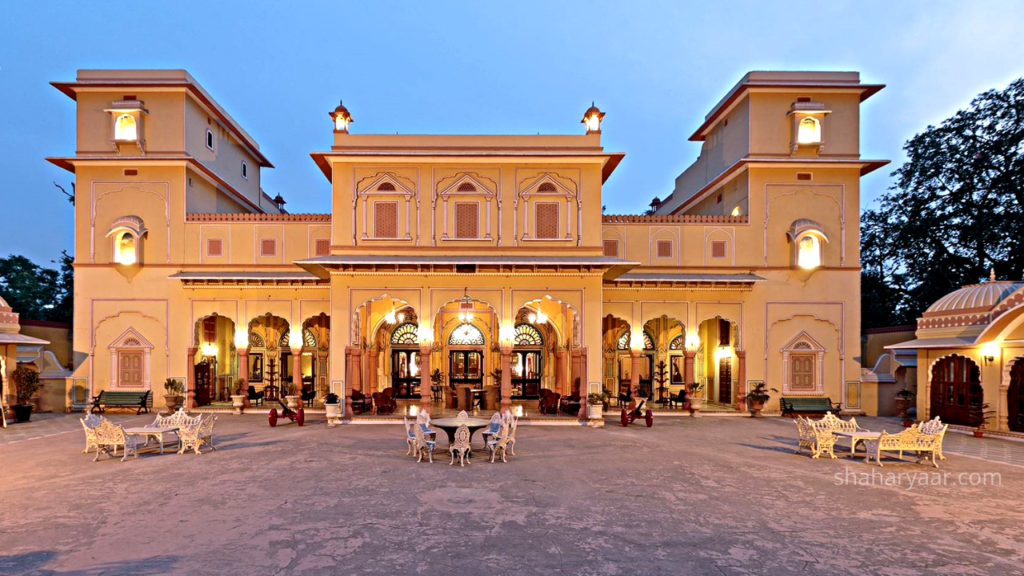
If in Jaipur you wish to take an exclusive retreat, wish to experience the royal life, then escape to the Narain Niwas Palace. It was owned by Amar Singhji — the Thakur of Kanota and used as a country resort by the royal family. But today, after almost a century, it is a royal luxury retreat for all. The original architecture and feel have been maintained while modern amenities have been added, so you will be pampered and comfortable. Top of Form.
BEST TIME TO VISIT JAIPUR.
| Travel Seasons | Min/Max Temperature | Season |
| November to February | 8-26°C | Winter – Cold and dry |
| March to June | 24-39°C | Summer – Hot |
| July to October | 23-34°C | Monsoon – Moderate rainfall |
- TOTAL ACCOMMODATION IN JAIPUR
- 25,543 TO 75,890.
- PLAN YOUR TRIP WITH SHAHAR YAAR
- HAPPY AND SAFE TRAVEL.

